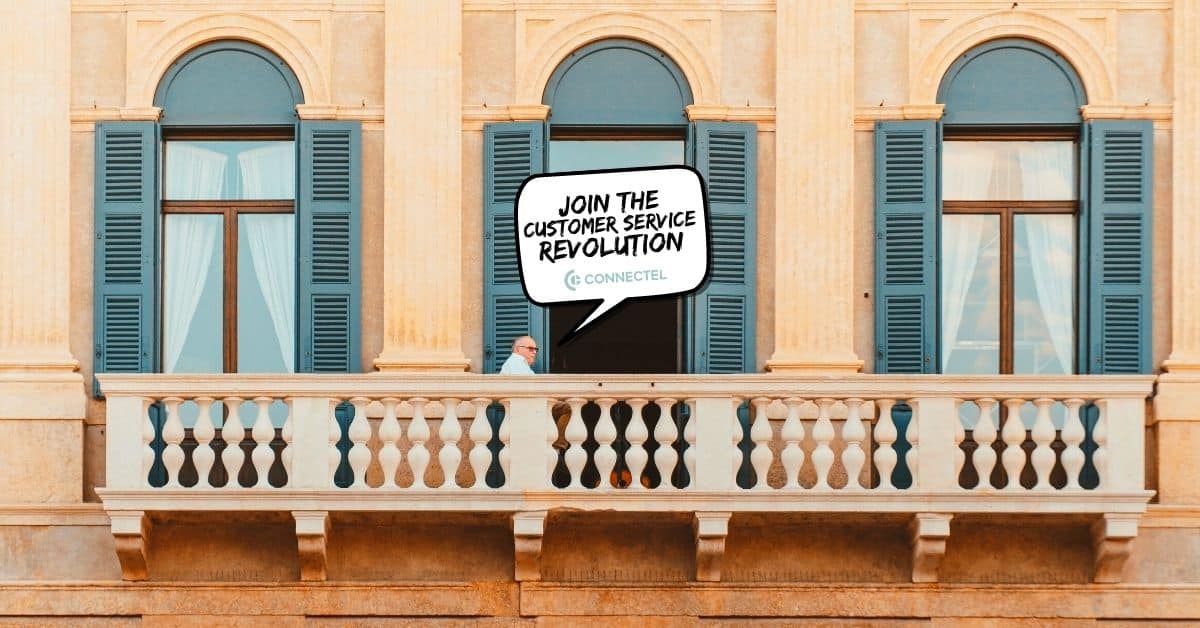

The process of developing customer service – step by step
As a customer service manager, there are three definite levels of development to keep in mind as you take new steps and develop your processes. The levels of customer service development are:
- Operational efficiency, the area you should first master and it is about having people, processes and technology in place to deliver according to your service level and quality of set goals with cost-efficiency.
- Deliver customer loyalty and create value in every customer contact that enables customers to increase their loyalty to the company and buy its products to a greater extent and for a longer period.
- Use all customer insights created in customer contacts to convey this to improve internally and sharpen services. Here, Speech Analytics can play a significant role in how customer insights are analyzed with AI and transformed into valuable insights. In many cases, it can also lead to business decisions for streamlining more than just the customer service, sometimes the entire core business of the company.
See these 3 levels as a development ladder for you as a customer service manager. Take one level at a time and perform one level well before you take the next step.
Level 1 – Operational efficiency improvement
The first level of developing your customer service is all about understanding the correlation between processes, people and technology. Implement a functioning, well-financed customer service with well-defined operational goals that are understood, measurable and accepted.
Achieving high efficiency requires a focus on planning activities that are broken down into appropriate periods (often 15 or 30 minutes). The purpose of this operation is to achieve high efficiency and a high level of service at the same time. Here, workload and time consumption are forecasts based on historical data for each type of activity. To create a forecast to staff up with the correct number of resources.
Optimize the value of your customer services resources
With forecasting, workload and scheduling structures, you will also learn to understand exactly how much of the employees’ time is lost in terms of illness, meetings, other activities and variations from normal schedules. By collecting data over time, you learn to see and understand what your organization should develop and focus on to reduce redundant resources. It is often around 20-30% of the working hours that don’t create value for your service.
If we compare customer service departments who do and don’t follow up by structuring their planning and working actively with their processes and scheduling (WFM – Work Force Management System). Those who do can half their quota of unnecessary time spilling. This planning should be central to the department as shortcomings also create major problems with varying service levels. Sometimes also overworked staff, increased staff turnover, lower confidence in management and higher staff turnover just to name a few.
Plan and analyze more
Clear signs of there is a lack of control in planning is that a lot of time is spent on quick measures, such as recruitment at short notice. For staff who need to be transferred between different tasks on the same day, dissatisfaction arises due to high or uneven workload. Try to set aside about 75% of your time for planning and analysis. And 25% on the daily management of the business to get in balance.
Analyze your deviations to understand and learn from them, could this problem be avoided through better planning? Planning must be done on different horizons with volume per year, month, week, day of the week and unit of time. Not everything can be predicted with the help of historical data. Assessments of different activities must be performed and woven into the forecasts. Here it is important to have contact with other departments to understand marketing campaigns, system changes, price increases or other factors that affect the volume and handling times in your customer service department.
Once you have reached the first level, you have:
- An organization with a supportive corporate culture
- Continuously reach your service level goal
- A well-functioning budget
- High eNPS (Employee Net Promoter Score)
- Low unplanned absence
- Key figures to develop your employees and productivity.
Congratulations, time to move on developing into level 2!
Level 2 – Customer Loyalty
With level 1 in place, you have all the requirements to reach the next level. This part is a lot about the content and tonality of customer conversations. A good trick is to divide customer conversations into different parts such as introduction, get information, provide information, focus on the customer, the solution and extra value.
In each area, you can through analysis and workshops decide how a good conversation should be designed in these areas. Try to keep it down to 3-5 areas and decide which are priority goals for an approved conversation. The introductory evaluation can be, for example, “was the correct answer phrase used”, “good tone”, “did I use a positive reinforcement when the customer told me why it called?”
Measure, coach and evaluate customer interactions
Today, there are digital coaching tools such as web services, but you can also use Excel. Keep it simple and set Yes / No / Not relevant on different aspects of the conversation. Set a point system between 0-100% in each of these areas. If there are different call types or customer groups that differ, there might be a requirement for specific evaluation forms. It is often useful to engage the staff with different group activities. For example, listen to remarkably good conversations together.
Of course, you also have to measure what the customers think. Focus on listening to conversations where you know the customer answered a survey where you have their opinion about your competence, treatment, value-added offer and whether they experience the conversation solved the question.
Test calls where this strategy is practiced and where customer satisfaction measurements receive maximum scores. You know that you have a valid call strategy to implement. Then it’s about training, coaching and supporting your employees so they deliver the same fantastic service in every call. This sure is simple in theory but hard daily work in practice.
All done? You have now achieved the goals of Level 2
- To create profitable customer relationships
- Increased loyalty
- Combined service and sales in customer service
Don’t be discouraged if this takes time, no organization will be “finished” with this customer service development, but a constant focus is required.
With a positive spiral where your employees receive positive feedback from customers, leaving them with good ratings in customer satisfaction surveys and to internal rewards for good results.
Level 3 – Progress with customer insights
Now we are taking advantage of all the customer insights that customer service receives. And packaging it in a way that both you and the rest of the organization can take advantage of to develop the company’s products and services.
Find structured forms for how you collect data. Such as, digital tools, call analysis, a form where customer service employees discuss what issues are relevant right now, what customers are talking about, where customer frustration arises and similar.
Customer insights throughout the company
Here it is important to find suitable and clear areas that employees can work with and receive feedback on. Structure the feedback and connect it with your internal stakeholders, who with customer insights can develop the business area.
Communicate the insights so everyone understands the consequences. For example, a potential income, costs due to shortcomings, or growth opportunities. Make these insights quantifiable and follow up on the proposals that are implemented. By informing employees in customer service that their proposals have been implemented motivates continued improvement and increases their status.
Developing CX with AI and speech analytics
Through feedback on positive implemented changes that started out in customer service, your customer service status within the organization also grows. Technical development such as Speech Analytics with AI analysis is a very valuable tool. Use it for identifying trends, quantifying problems and discovering opportunities. Use the technology to group all incoming calls, analyze the amount of value-creating calls you want more of and above all, which calls you don’t.
Find out the cost of each category through the knowledge of the number of calls and handling time for each type. Therefore, you have data on what the complaint process creates for customer service costs, delayed deliveries, etc. This is important data for prioritizing the company’s development and improvement projects, especially when it comes to investments that must be justified.
With Speech Analytics, you can analyze an infinite number of areas and follow trends over a larger period. The optimization of the business reflects the outcome. You can see what effect your change has, which also increases your chances of prioritizing more accurately in the future. Customer service calls are a treasure for all departments, it provides the opportunity to increase customer service status and usefulness in the organization significantly.
Summary of the customer service growth processes
- Customer service is about people, processes and technology. Learn the basics of all three areas. Think about where you are weakest and work actively to get a balance between them.
- Establish a supportive corporate culture that has the courage to renew your routines – and is constantly evolving.
- Work actively with planning and measuring the results of the processes, for example, follow up Prognos vs. Outcome, and do not forget to celebrate when you get better.
- Work strategically with coaching, measure and pay attention to the successes.
- Create a strategy to retain your employees over time, invest in activities at work, career ladders, individual training plans, etc.
- When the business runs more professionally, the key figures also become more interesting. But start focusing on a few and add more over time when they actually have a purpose. Start from the 3 levels of maturity above and add metrics as you develop. There are lots of metrics and the businesses that perform best often look at a larger number of key figures, linked to detailed goals that span all functions in the business.
Explore Connectels features for better CX


